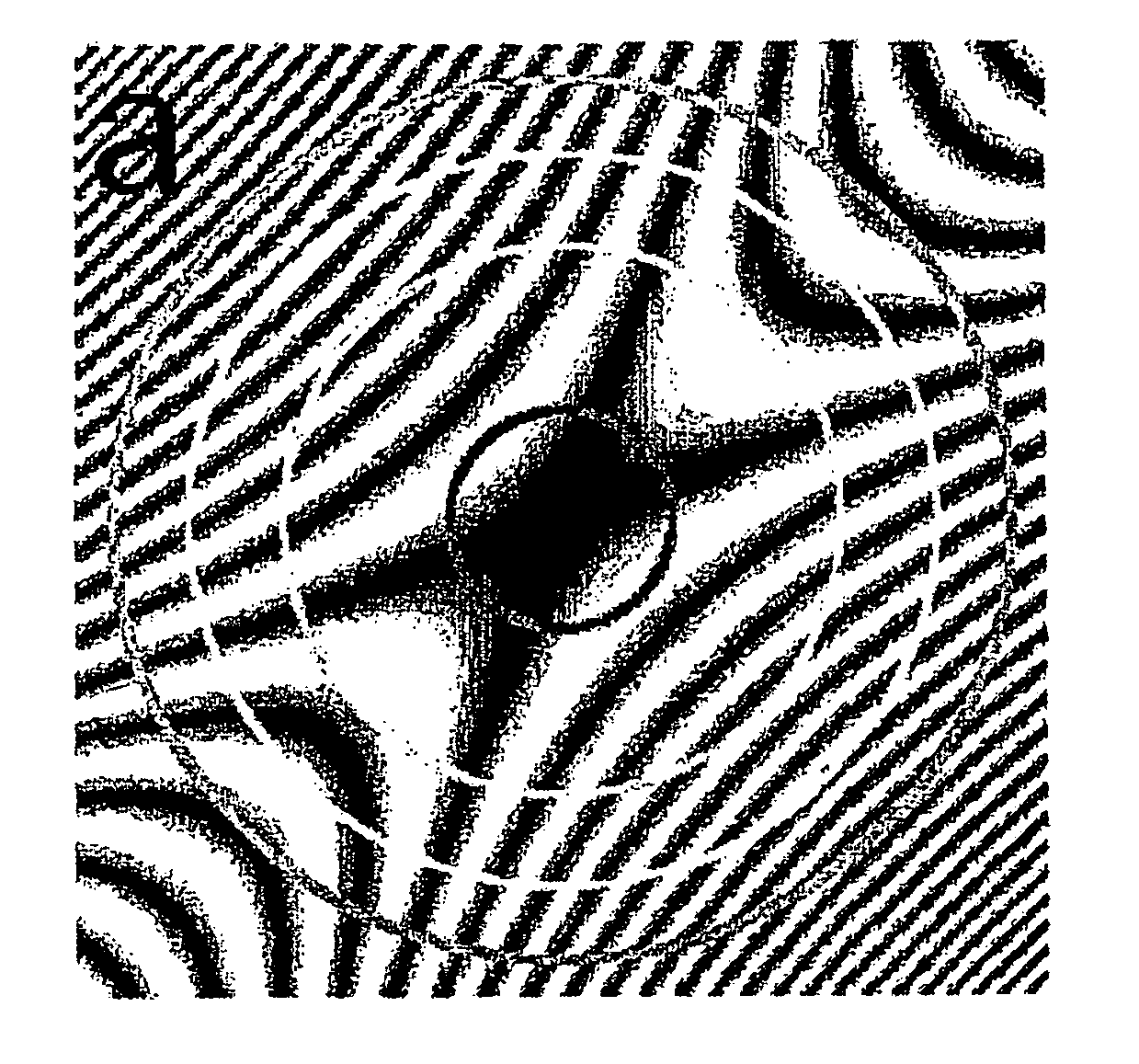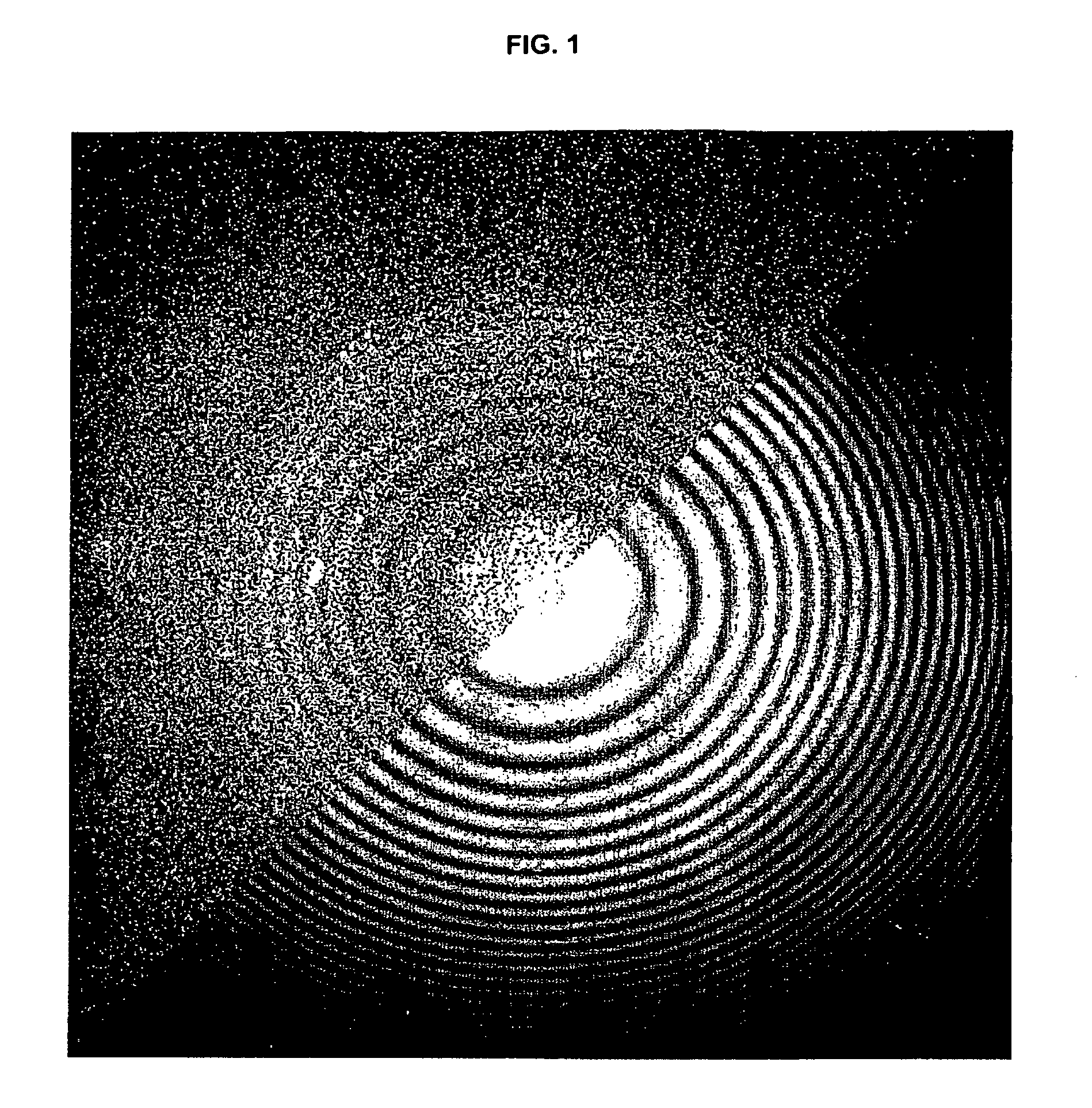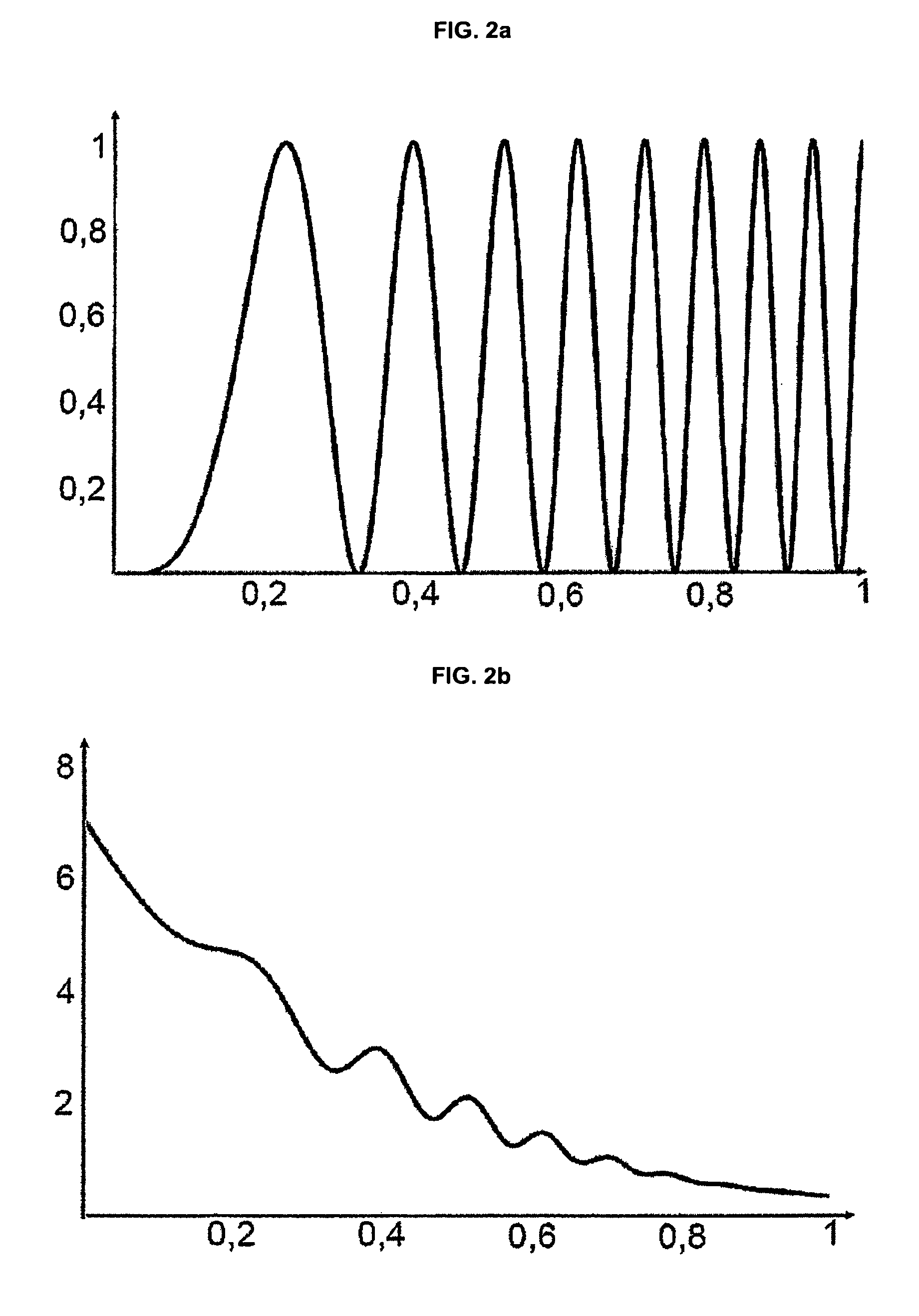Method and electron microscope for measuring the similarity of two-dimensional images
- Summary
- Abstract
- Description
- Claims
- Application Information
AI Technical Summary
Benefits of technology
Problems solved by technology
Method used
Image
Examples
Embodiment Construction
[0079]FIG. 1 shows an electron-microscopic depiction (diffractogram) of a thin amorphous object, shown in Fourier space (spatial frequency space). The upper left half shows an experimentally measured image. The lower right half shows the simulated image, which comes closest to the experimentally measured image. This simulated image embodies the useful signal present in the experimentally measured image. However, it already contains additional signals, such as damping envelopes, which inevitably occur in the experimentally measured image. In this way, this ensures that the purely visual similarity between the experimentally measured image and the simulated image is only influenced by changes of the two measurement variables of interest, which is to say defocusing and astigmatism.
[0080]The ring patterns are also referred to as Thon rings. The shape thereof depends on the angle of incidence of the electron beam, the electron wavelength, the spherical aberration constant, the effective ...
PUM
 Login to View More
Login to View More Abstract
Description
Claims
Application Information
 Login to View More
Login to View More - R&D
- Intellectual Property
- Life Sciences
- Materials
- Tech Scout
- Unparalleled Data Quality
- Higher Quality Content
- 60% Fewer Hallucinations
Browse by: Latest US Patents, China's latest patents, Technical Efficacy Thesaurus, Application Domain, Technology Topic, Popular Technical Reports.
© 2025 PatSnap. All rights reserved.Legal|Privacy policy|Modern Slavery Act Transparency Statement|Sitemap|About US| Contact US: help@patsnap.com



